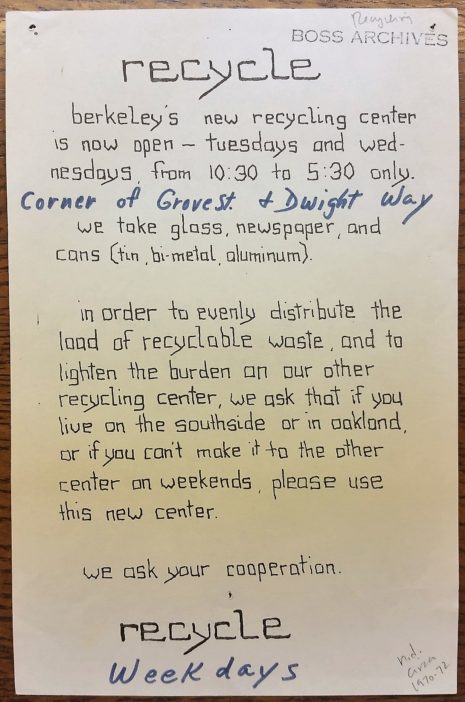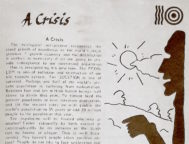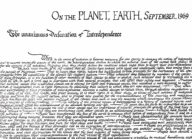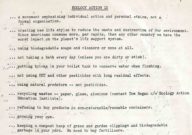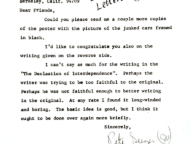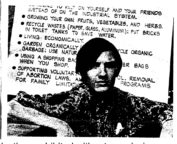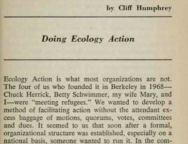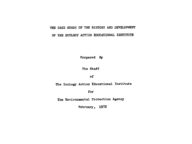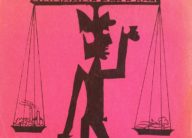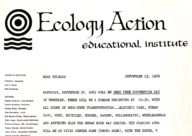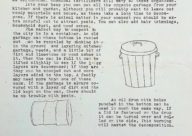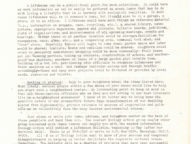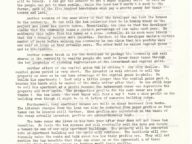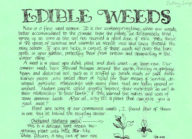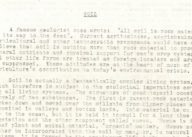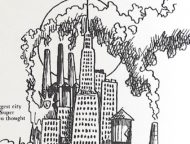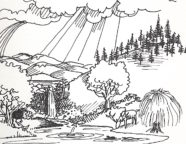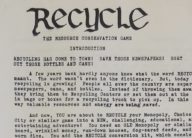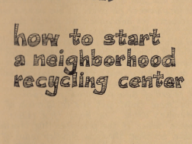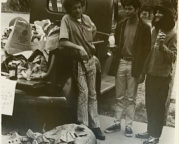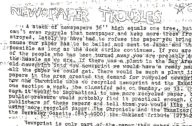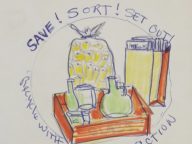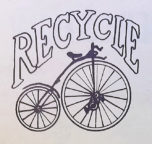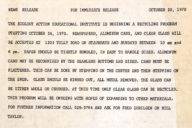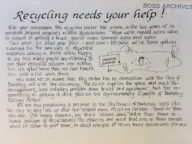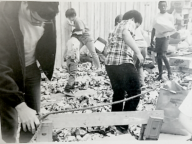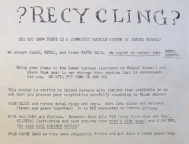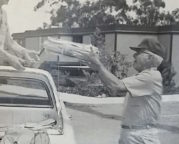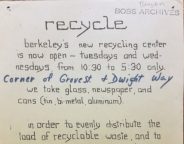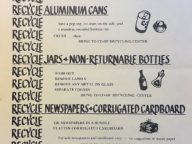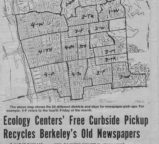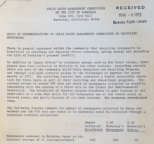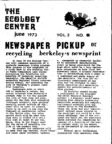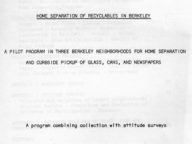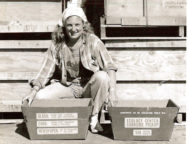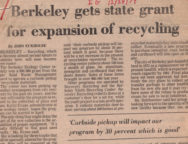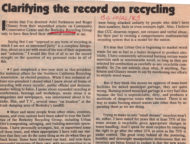This flyer reflects the mystery of the recycling movement in Berkeley. Who was this center run by? Was it associated with an existing organization? What is the other recycling center that they need to “lighten the burden” from?
To be open only two days per week (Tuesdays and Wednesdays) suggests that it was volunteer run. Why were the volunteers there? What was the money from collecting recycling used for?
To the community perhaps these answers were obvious but looking into the archive, it leaves more questions than it answers.
The Writing
Another handwritten flyer, it resists technology and embraces personalization. The creator uses blocky letters in all lower case. Was this an aesthetic choice or a political one? Removing capitalization implies a political choice by the writer to subvert the construction of language as a product of hegemonic society.
However, the location and “Weekdays” are written onto the photocopied document in blue felt pen. This text uses capitalization. Was this written in by the first author to make these lines stand out from the rest of the document? Then the lowercase font is not political. Was it added in by another person because the first author had overlooked the need for this information to be included? Was this written by the recipient of the flyer who had a blue pen handy? Maybe, it was passed out at the existing center the flyer refers to and a person would have been there to explain further the location of the new site.
The Location- Grove St and Dwight Way
This site would have been fairly large and very visible to the public. Grove Street was changed to Martin Luther King Jr Way in Berkeley in 1984. Imagine how easily accessible a recycling center would have been at the cross of these two busy streets.
If “our other recycling center” refers to the Co-Op’s Recycling Center at Sacramento St and University, it is not really more accessible to Oakland and South Berkeley. They would have been about a mile apart. The site at Sacramento and Dwight was large- it would have been able to receive a lot of people and recycling, so what center was being burdened? It may refer to a recycling center somewhere in West or North Berkeley. Maybe the “our” refers to a specific organizations other center or maybe it is an “our”,thinking on a communal scale, referring to another site in the city.
“We ask your cooperation-recycle.”
There were sites all over the city, with different capacities and formalized processes. It is amazing that Berkeley utilized all of them in the early 70s. People were willing and ready to recycle.
The request at the end of the flyer is made simple but implies a big result. Work together on recycling so the community and earth will be healthier.
1979
A newspaper article refers to this site as still thriving in 1979. It is named in intentional lower case type as “the recycling center operation at Grove St and Dwight Way”. Their Director, Pam Belchamber, quoted in pullout text, notes that the citywide curbside expansion by the Ecology Center will take material away from their program but will increase the net amount of recycling being saved from the garbage dump. Despite their personal loss, recycling wins overall.
